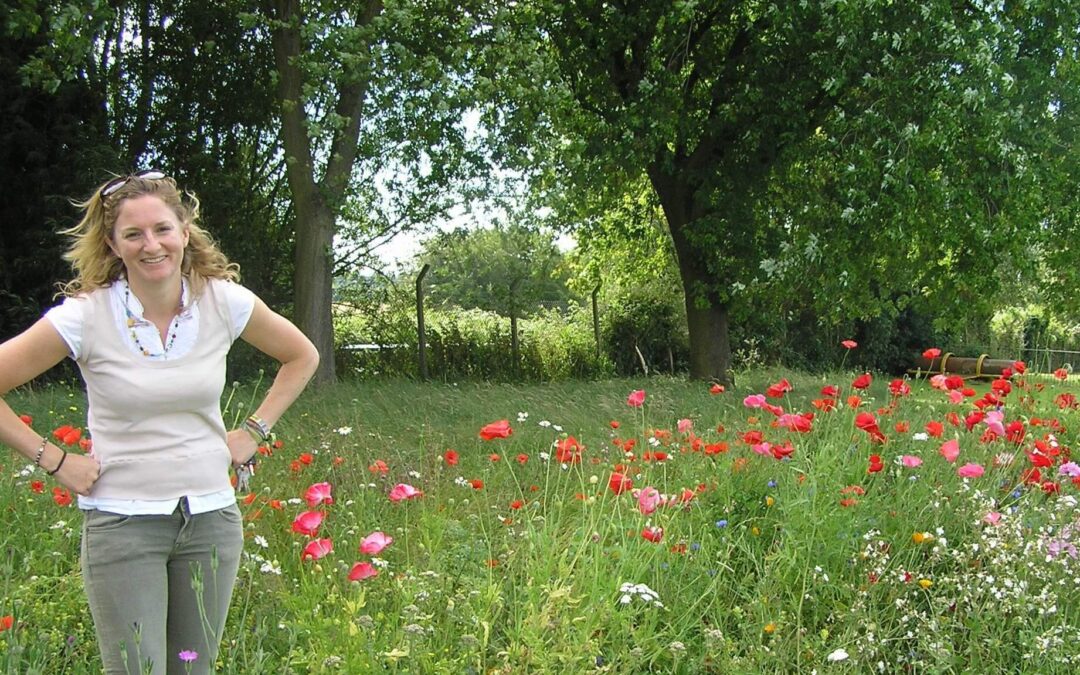Wildflower seeding
There are several different seeding options available for meadow creation and restoration, which are listed below. Seeding is often preferable to plug planting over larger areas due to cost and practical implications.
Ground preparation
Ground preparation is key to providing a suitable seed bed for any of the seeding methods chosen below. All methods begin with close cropping the vegetation down to ground level (several cuts in autumn recommended) and removing arisings through tradition hay cut or a cut and collect machine in smaller areas. The following methods have been employed in meadow creation to create bare ground in existing meadows and should be undertaken when ground conditions are most suitable for working your soil type:
- Chain harrowing to open up sward (two passes in different directions)
- Disc cutter can open up harder ground especially after drought
- Power harrow (more successful in breaking up and exposing bareground on sites with lots of thatch build-up but can activate weeds in seed bank)
- Scalping/scarifying vegetation with a ryetec/amazone scarifying function that collects arising thatch can be very effective
Starting from scratch and completely clearing vegetation may be the best option open on species-poor sites with a high weed burden and fertile soils. The options below are available:
- Topsoil stripping (if you can get a good price for arising topsoil it can help pay for the work)
- Subsoil cultivation to bury the fertile topsoil
- Repeated shallow cultivation of soil to remove weed flushes
- Covering vegetation with black polythene to kill of unwanted vegetation before sowing
- Spraying vegetation with non persistent herbicide to kill of unwanted existing vegetation and weed flushes
Magnificent meadows provide an excellent advice sheet based on lessons learnt from different projects and methods used for creating bare ground in preparation for seeding.
Sowing tips
- 80:20 & 50:50 Grass:wildflower mixtures; sow at 3- 5g/m2
- 100% Wildflower mixtures (or lower grass content); sow at 1-1.5g/m2
Sowing rates should be at the higher end of the scale on fertile sites with a lower proportion of grasses in the mix (no more than 50%).
Sow seed in Spring (March to April) or Autumn (September to October)
Surface sow and roll seed to provide good soil contact- hooves and feet can also be effective!
Seed sources
Following ground preparation the following seeding methods are available, which all have their own drawbacks and advantages. When restoring meadows outside of garden settings in semi-natural habitats then strictly UK native seed mixes should be sown. See Ecohab Wildflowers earlier blog on the importance of native and local provenance seed sources .
- Natural Regeneration- recommended if next to a species-rich grassland and natural processes are preferred option. Maintains local distinctiveness of meadows
- Green hay – due to the amount of material needing to transport you need to be in close proximity to the donor site
- Brush harvested seed- recommended cost effective way of intorducing local provenance seed
- Commercial seed mixes – good in situations where local provenance seed is not required and where control of species within the mix os required
- Hand collected seed for conservation and rare species-suitable for small areas of for topping up with rare species or those of local distinctiveness
Magnificent meadows provides an excellent comparison of different seeding methods to help you decide the most appropriate method for your project


Recent Comments